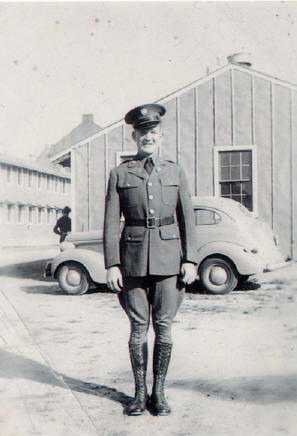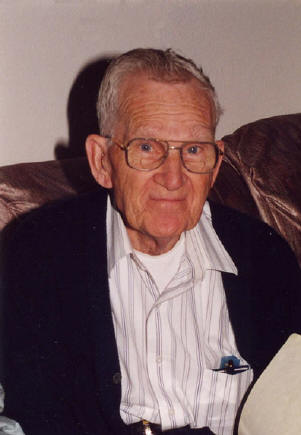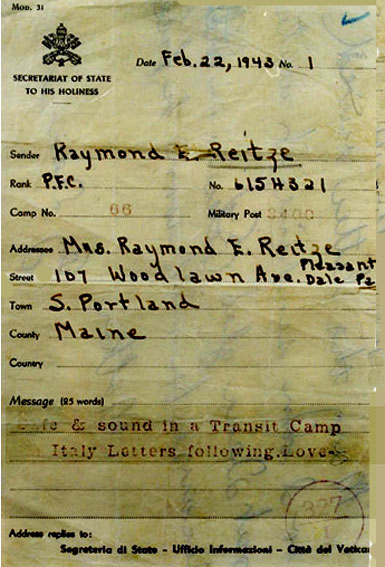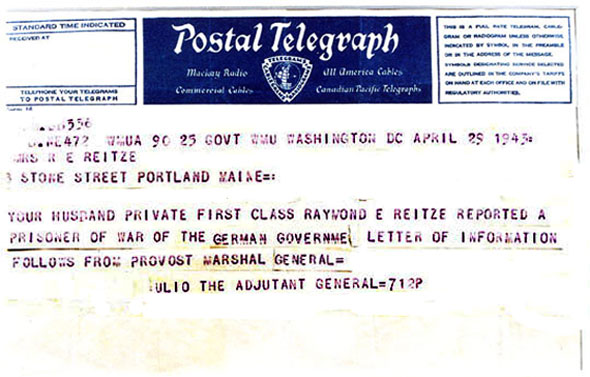
Established April 14, 1942
 |
American Ex-Prisoners of War
A not-for-profit, Congressionally-chartered veterans’ service organization advocating for former prisoners of war and their families.
Established April 14, 1942 |


Raymond E. Reitze - 1940s
|

Raymond E. Reitze - 2000s
|
|
| Last Name | First Name, Middle Init. | Nickname |
| Street Add. | City | State |
| Zip | Spouse | |
| Conflict | Branch of Service | Unit: |
| Theatre of Operation | Military Job | Where Captured |
| Date Captured | Time Interned | Camps |
| Date Liberated | Medals Received | Age at Capture |
| After the War ... | ||
After training in England, his unit became part of two armadas numbering more than 100,000 troops that sailed 2,800 miles from Britain to Algeria for "Operation Torch." On Nov. 8, 1942, the men hit the beaches in Oran. Ray fought battles in Berserta, Tunis, Faid Pass, Sidi bou Zid, and on Sunday, Feb. 14, 1943, what was left of II Corp fought and was captured at Kasserine Pass, North Africa by Rommel and his troops, beginning his 26 months as an American P.O.W.
"We were taken to Italy on February 22 by German Junker 88's Bomber planes. There were so many of us on the planes we could hardly move." Then they were boarded on boxcars arriving at Stalag VII A, eventually to be transported again to Stalag V B, and finally to Stalag II B in Poland, where they would work as slave laborers in Stettine and at Stolp Pomerazevarious.
While in Stalag II B, Ray and three other prisoners were made to dig trenches and lay cables for what was to be a gas chamber. Taking turns watching the guards, each man would jump into the trenches breaking the cables with their shovels and cover them with dirt before being caught. The result of their efforts was one less gas chamber firing up, which likely saved thousands of lives.
"I also worked on a farm at Stolp. I got an infection in my left wrist from a piece of metal and another fellow had a carbuncle on the back of his neck and at that time we had a guard that wasn't the SS and he took the other man and myself to a medical station, Lazaret 1 in Stargard . The doctor cut a piece of metal out of my wrist and the carbuncle out of the other fellow's neck with nothing to deaden the pain. I can't remember the other fellow's name."
On Jan. 29, 1945, Ray began the 500-mile "German Death March." "I was on the Death March from January of 45 till April 22, 1945." He started at Stolp Pomerazevarious, Poland and ended in Haganow, Germany, where he was liberated and freed back to the American government. Of the 1,200 men that started the march, only 200 survived. Ray weighed 87 pounds upon liberation.
Ray was discharged in August of 1945. Following his return home, he and his wife Mary raised their family of six in Buxton: two sons and four daughters. He worked at the Portland Gas Light Co. Ray was an active member of the Buxton Grange, the American Prisoners of Foreign War, and the Westbrook VFW. He attended the First Baptist Church of Westbrook and Buxton Community Church.



